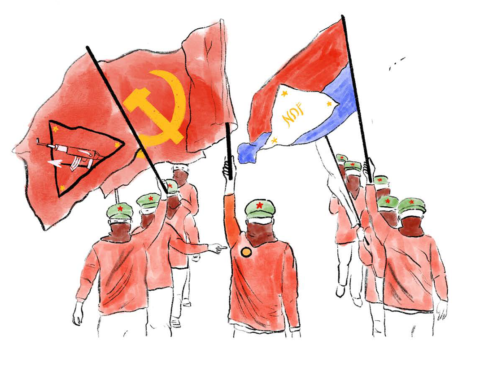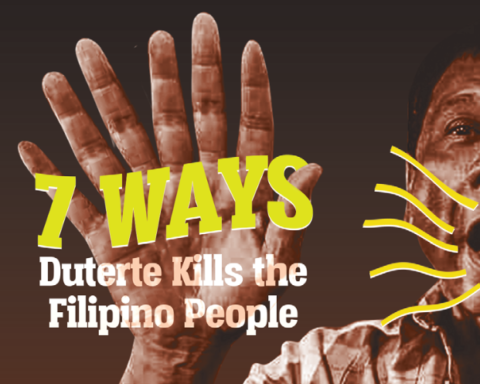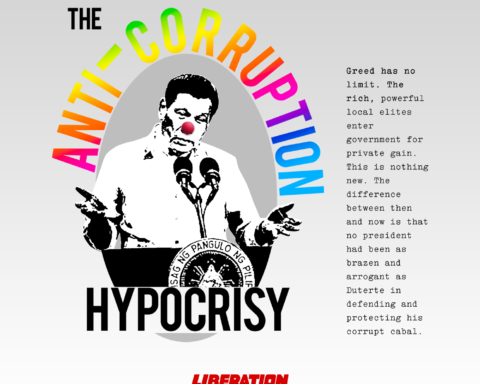Landlessness is the primary and greatest problem of the peasantry. From it springs centuries-old feudal and semi-feudal exploitation and oppression. Landlords and landlord-compradors take utmost advantage of their entitlement to the land. Traders likewise dangle their capital, their farm implements, their mills. Like leeches, they sap dry the life-blood of the farmers from unfair share in the harvest, expensive imported farms inputs of seeds, fertilizers, insecticides and pesticides, rent to farm implements, usurious loans. Such is the plight the peasantry live by, die in and yes, die for to break the chains of bondage.
With bullets
Under Duterte’s fascist rule, the situation is at its worst. Farmers are dying not only of hunger and penury but also from State-sanctioned killings—brazenly, brutally and with impunity.
For mere suspicion of being an NPA or supporter of it, they are killed by state armed forces in the implementation of Oplan Kapanatagan, a midterm replacement of Oplan Kapayapaan. The same may be new but it is otherwise an old military plan patterned after the US Counter-insurgency (COIN).
They are killed by the paramilitary groups like the Citizen Auxiliary Force Geographical Unit (CAFGU) and other private armed goons hired by landlords and big business. They are killed to protect the landlords’ lands, the business interests of foreign corporations, big compradors and bureaucrat capitalists. They are killed to give way to logging, mining, quarrying, plantations, malls, commercial complex, subdivisions, eco-tourism hubs.
For the period from July 2016 to June 2019, human rights organization Karapatan reported 216 peasants killed.
They are killed to quell dissent, to extirpate them being the main force of the people’s democratic revolution. They are killed to crush the people’s revolution for national and social liberation; a dream the powers-that-be have long-conceived, a dream woven over and over again, but forlorn over and over again.
With laws
Not only bullets kill the farmers; laws too. Previous regimes have passed agrarian reform laws to pacify and deceive the peasantry since these only led to reconcentration of land to landlords. Every regime has tried to make these palatable giving false hopes to no end.
Land use conversion kill farmers when they were displaced and lost livelihood as almost a 100,000 hectares of land were approved for conversion since 1988 to 2016.
The National Irrigation Agency (NIA) admitted that a yearly average of 165,000 hectares of prime irrigated agricultural land converted to other uses. Much of these lands go to the non-agricultural endeavors of the likes of Henry Sy, Zobel-Ayala, Roxas, Lopez Yulo, Cojuangco, Floirendo, Consunji, among others.
Duterte’s signing of the Rice Tarrification into law is a death sentence for the struggling peasantry. The Rice Tarrification Law fulfills the country’s commitment to the World Trade Organization (WTO) to further liberalize importation of agricultural produce. Under the law, restrictions on rice importation are lifted; albeit imposing a 35% tariff at the start which will eventually be phased down.
Private traders are allowed to import the commodity from the countries of their choice. The government believes the influx of imported rice will lower its price and clip the run-away inflation. It perceives that the tariff revenues that will be channeled to the Rice Competitive Enhancement Fund (RCEF) would boost farm productivity.
The government glossed over the reality that rice cartels exist and in due time could spike rice prices; that greed and corruption are deeply entrenched in the present social order and the RCEF would just be another coffers to source and bloat the ruling classes’ wealth. The government has its eyes close to the real score on the ground. The flooding of imported rice supply at cheaper price because agricultural production is subsidized by the government in the countries of their origin, will greatly impact on the local farmers. Encumbered by the high cost of production—high cost of inputs, absence of post-harvest facilities and dependence on traders for market—local farmers cannot be competitive.
Since the implementation of the Rice Tarrification Law in March 2019, the farm gate price of palay (unhusked rice) has plummeted from P17 – P20/kg in 2018 to P7 –P11/kg. According to NFA, it can procure unhusked rice produce for P19/kg for dry and clear palay with 14% moisture and P14/kg. for fresh and newly harvested palay with 30% moisture content. dry and clear 14% moisture – P19/kg fresh and new 30% moisture – P14/kg.
With the P10 B allocation for the procurement of palay in the 2020 national budget, how far would this amount go?
As of end September, PSA reported that “the average whole-sale price of well-milled rice is at P38.43/kg, 17% lower than the P46.18/kg. level from the same period a year ago; average retail price also decreased by 14.2% to P42.27/kg.” But how long will this pricing hold?
The peasantry has all the reasons to launch agrarian revolution as the main component of the people’s democratic revolution. The peasantry has all the reasons to protect and uphold the gains of the armed struggle, the mass bases they have built, the organs of political power they have installed. # # #
#PeasantMonth
#StandWithTheFarmers
#ServeThePeople
#JoinTheNPA
—–
VISIT and FOLLOW
Website: https://liberation.ndfp.info
Facebook: https://fb.com/liberationphilippines
Twitter: https://twitter.com/liberationph
Instagram: https://instagram.com/liberation_ph






